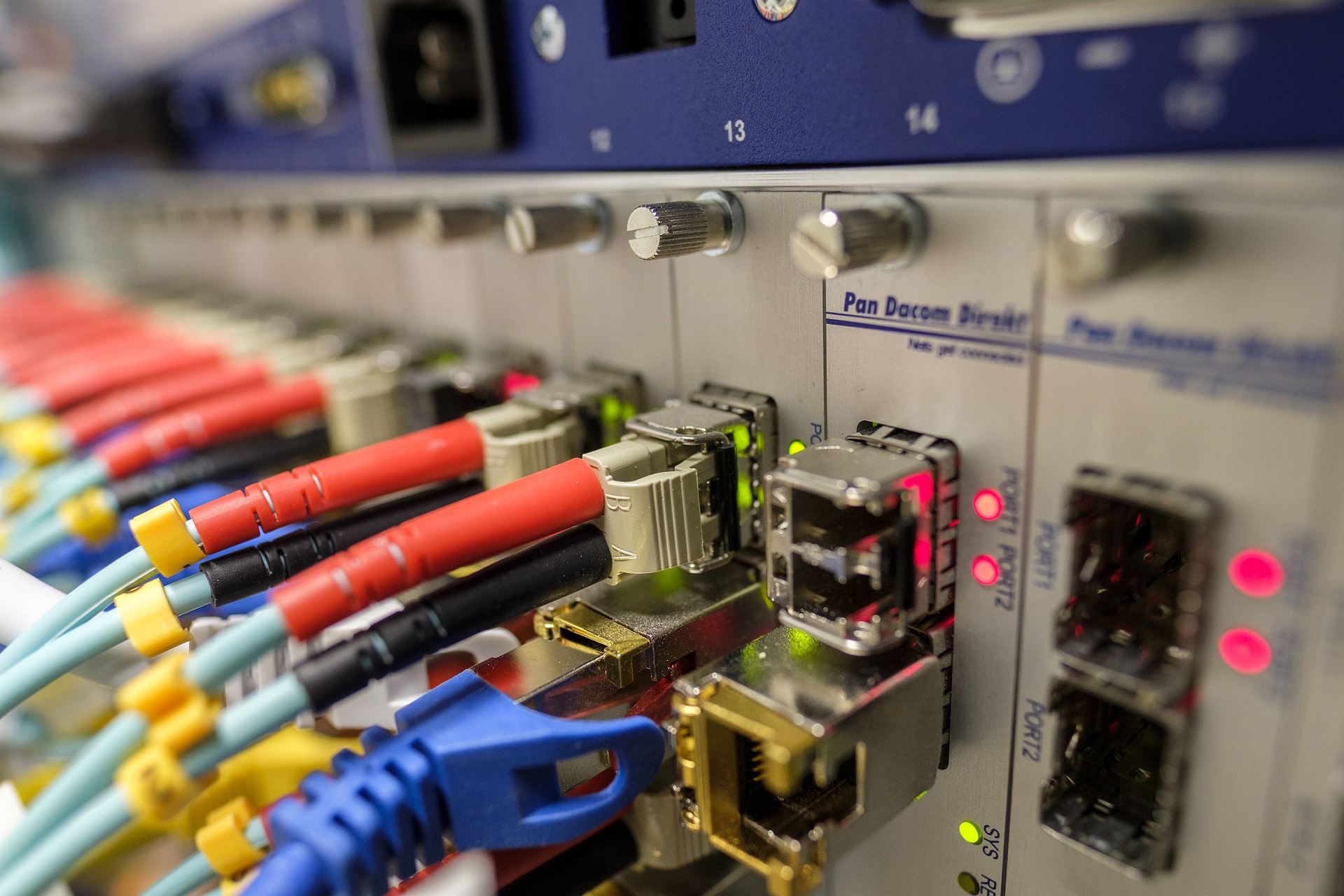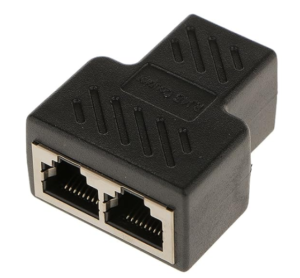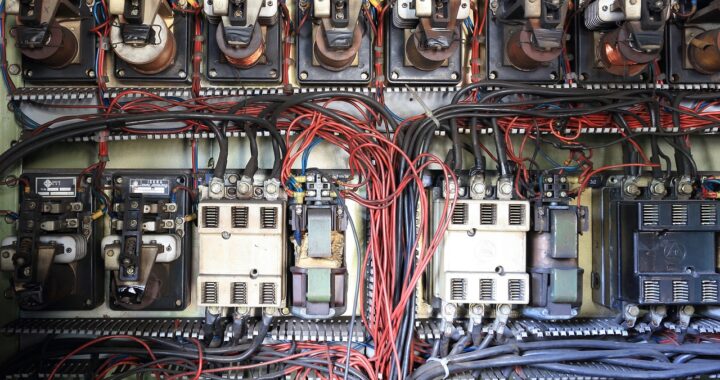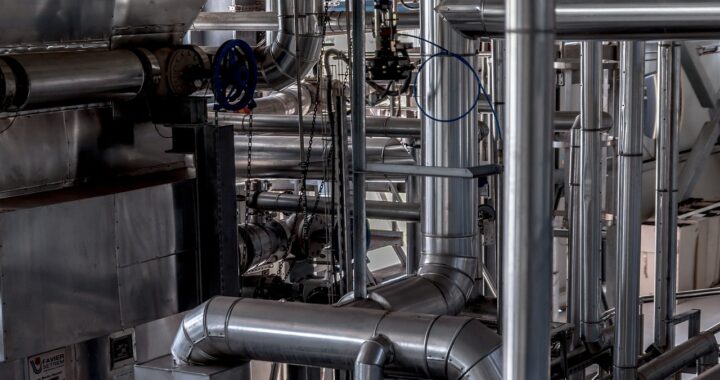Ethernet Splitters are extensively promoted across numerous websites, leading to occasional confusion with Ethernet switches. However, it is crucial to recognize that they are distinct devices with fundamental differences.

Within the realm of Ethernet equipment, the Ethernet splitter stands out as a noteworthy item. However, it can be particularly perplexing due to its dual functionality.
There are two types of Ethernet splitters: one designed to split the Ethernet line, enabling two Ethernet links to traverse a single cable, and the other tailored for use with Power over Ethernet applications.
It's unfortunate that many people have purchased Ethernet splitters without a full understanding of their functionality and the crucial distinction between an Ethernet splitter and an Ethernet switch. The lack of clarity can lead to suboptimal network setups and potentially hinder the users' ability to make the most of their networking infrastructure. Educating consumers about these devices and their respective purposes is essential to avoid such confusion and ensure they make informed choices when setting up their networks.
Table of Contents
ToggleWell before understanding Ethernet splitter just we will revise “what is Ethernet?”
Ethernet is a widely used technology that enables wired local area network (LAN) communication. It provides a means of connecting devices, such as computers, printers, switches, and routers, within a confined geographic area, typically within a home, office, or campus environment.
The Ethernet technology follows the IEEE 802.3 standard and utilizes twisted-pair copper cables or fiber-optic cables for data transmission. It allows devices to communicate with each other by sending and receiving data packets over the network.
Ethernet offers several advantages, including high data transfer speeds, reliability, and low latency, making it suitable for various applications, such as internet access, file sharing, video streaming, online gaming, and more.
Over the years, Ethernet has evolved, and different variations have been introduced, such as Fast Ethernet (100 Mbps), Gigabit Ethernet (1000 Mbps), and 10 Gigabit Ethernet (10 Gbps), catering to the increasing demand for faster and more robust network connections.
For more details watch this video, here Ethernet is explained in Hindi.
Now we will start our main topic "Ethernet splitter"
What is Ethernet splitters ?

An Ethernet splitter does not increase the number of devices you can connect via Ethernet. It is important to note that using a splitter will not create additional functional Ethernet ports. Instead, it divides a single Ethernet connection into two separate cables. However, it is essential to remember that you will need another splitter at the opposite end to "unsplit" the connection and restore it to its original state as a single Ethernet cable. Consequently, the use of two Ethernet splitters is required for this setup to function correctly each time.
Line Ethernet splitters
The purpose of this particular Ethernet splitter is to minimize the amount of Ethernet cabling required. It achieves this by transmitting two distinct signals over the same cable. However, it is important to note that this type of splitter is only compatible with 10 and 100 Mbps Ethernet connections since not all the wires within the cable are utilized.
In essence, the Ethernet splitter for 10 and 100 Mbps Ethernet creates two data communication channels within the cable, effectively allowing two sets of connections to be transmitted along a single cable. As 10 and 100 Mbps Ethernet uses only four of the eight available wires in the Ethernet cable, it becomes possible to optimize the use of the cable by running two separate links through it.
There are several drawbacks associated with using an Ethernet splitter:
Diminished Data Transfer Speed:
One significant downside of employing an Ethernet splitter is the significant performance limitation. It can only operate at the speeds applicable to fast Ethernet, i.e., 100Mbps. If the local area network utilizes Gigabit Ethernet, the lines using the splitter will experience a substantial reduction in speed – from 1 Gigabit down to a maximum of 100Mbps, resulting in a tenfold speed decrease.
Elevated Crosstalk:
Utilizing an Ethernet splitter will lead to heightened crosstalk between the different lines. Despite the twisted pairs, the close proximity of the wire pairs throughout the Ethernet cable's length will increase the level of crosstalk between the wires. Using a screened cable where the twisted pairs are screened can reduce this factor, but it may still cause issues.
Necessity of Ethernet Splitter and Combiner:
The system necessitates two Ethernet splitters to function properly – one to combine the two cables into one and another to split them out again. Often overlooked, Ethernet splitters need to be used in pairs – one for combining the two lines and the other for splitting them back into individual connections.
Ethernet splitters are available in two primary formats:
Small Module with One Ethernet and Two Ethernet Sockets & One Short Cable with RJ45 Plug:
This type of Ethernet splitter is commonly found for sale. It consists of a small module with two Ethernet sockets and one short cable with an RJ45 plug. However, due to the RJ45 plug on the output for the single line, it requires some means of connecting it to the Ethernet cable. It proves to be ideal when connecting to an RJ45 socket, especially in scenarios where the Ethernet cable is embedded in a wall, and an RJ45 socket in a wall-plate is used.
Adapter with Three RJ45 Sockets:
The second type of Ethernet splitter is more convenient when standard Ethernet cable connections are required. This adapter comes with three RJ45 sockets, making it simple to connect multiple devices using standard Ethernet cables. It offers versatility and ease of use for various networking setups.
Ethernet splitters can be a practical solution for connecting two devices to a remote Ethernet switch, especially in situations where only one cable is available, such as when embedded in a wall during construction. However, it is crucial to be aware that they come with significant limitations, notably a reduction in the maximum available speed. In today's era, where Gigabit Ethernet is widely used for high-speed data transfer and video streaming, using an Ethernet splitter may result in a considerable decrease in performance, akin to taking a step backward.
While Ethernet splitters might suffice for certain applications in the short term to establish connectivity, caution should be exercised during their installation, as the speed reduction can be a significant factor to consider. For critical applications that demand high-speed data transmission, alternative solutions such as Ethernet switches should be explored to ensure optimum performance and efficiency.
Ethernet PoE splitters
Another useful type of Ethernet splitter is known as an Ethernet PoE splitter, which stands for Power over Ethernet splitter.
Power over Ethernet (PoE) is a system that carries power for remote devices over the Ethernet cable. Because the power is in the form of DC (direct current) and the data operates at high frequencies, they can be transmitted simultaneously over the same lines without interfering with each other.
PoE is widely utilized for powering small remote devices like Ethernet security cameras and VoIP phones, among others. Normally, the power is provided by the Ethernet switch, and PoE-enabled switches are readily available, though they do come at a higher cost compared to non-PoE switches.
Ethernet PoE splitters serve the purpose of allowing non-PoE devices to utilize power provided via PoE. These splitters separate the power and data signals from the Ethernet cable. The data connection is delivered through an RJ45 connection, while the power connection is supplied through another appropriate connector, which could be a USB or a coaxial power connector known as a DC connector.
By utilizing an Ethernet PoE splitter, it becomes possible to power remote non-PoE devices, such as VoIP phones and cameras, via the Ethernet cable that provides the data connection. This can be highly convenient, particularly in situations where a separate mains power supply might otherwise be required to provide the necessary DC power.
Alternatively, if the Ethernet switch or router is not a PoE-enabled device, DC power can be injected onto the Ethernet cable using a device called an Ethernet PoE injector. The injector is powered separately, and it places the required DC voltage onto the Ethernet cable, thereby supplying power to the remote Ethernet PoE device.
Conclusion
Ethernet splitters, Ethernet PoE splitters, and Ethernet switches are distinct devices, each serving unique purposes. When employed appropriately, Ethernet PoE splitters prove to be highly valuable for powering non-PoE Ethernet devices. They offer an ideal solution for remotely supplying power to a wide range of devices, leveraging the convenience and efficiency of Ethernet connectivity.
To understand difference between Ethernet Switches and Ethernet Splitter:
Visit https://www.maketecheasier.com/ethernet-switch-vs-hub-vs-splitter/
Digital Twins : Visit https://plcdcscontrol.com/digital-twins-architecture/


